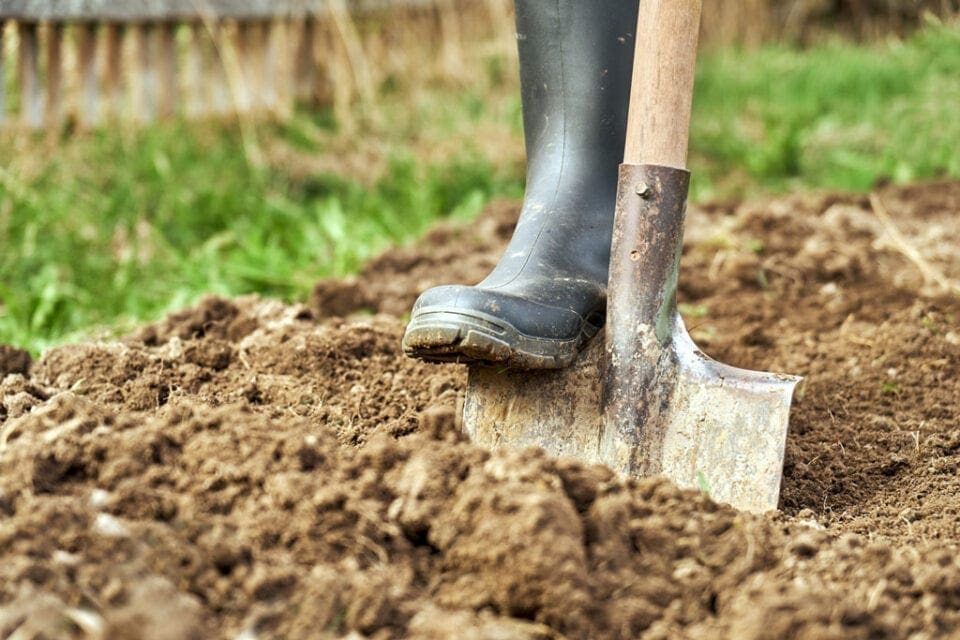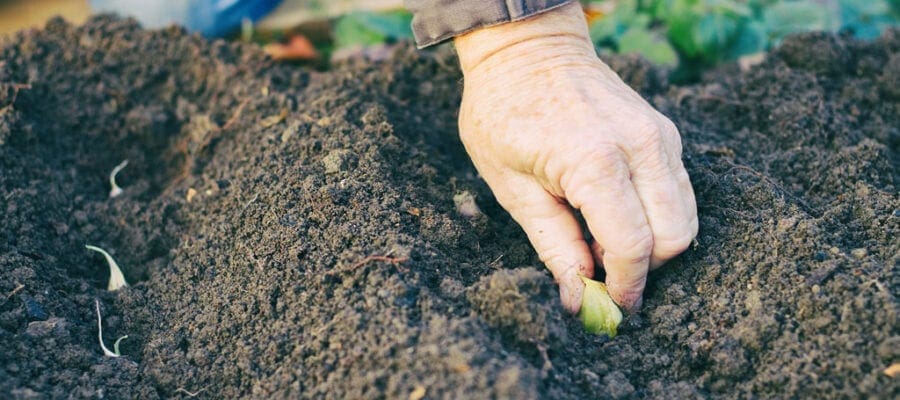
You can start a veg patch almost any time if you have a nice piece of bare soil. However, if you are starting from scratch and the area is still lawn or very weedy this is best treated with a weed killer such as glyphosate.
This works better in warm, sunny conditions so summer is ideal, but failing this a warm spring or autumnal day; if the weeds are green and actively growing it is still worth using.
Time to dig your plot
Traditionally digging is done at the end of the growing season in late autumn/early winter so you open and expose the soil to frosts to break down the clods of earth and allow water to penetrate.
Digging exposes soil pests to the birds and aerates the ground. If you have very free draining soil then you may get away with digging on a winter’s day but if you have heavy clay it is often easier to dig in autumn or spring when it is not so saturated.
Preparing a seed bed
In many milder areas of the UK it is possible to sow seeds direct from March, but April is the safest bet for most areas, so as soon as the weather improves the seed bed can be created.
If you have already dug over your soil and added organic matter earlier in the year all you will need to do is to rake it over to break the surface down into small crumbs and to level it, also to remove any germinating weeds and large stones that may have emerged during the winter months.
The frost will have worked on the clods ensuring that they are easy to break down, but if the soil begins to stick to the rake or your boots, leave it alone and come back in aweek or so when it hopefully will have drained. Raking over the soil produces what is called a fine tilth. This is a level crumbly surface ideal for sowing seeds into.

Feed or not to feed
A newly created veg plot may not require additional fertiliser if the soil is good. However, if the soil is poor, looks sandy or is heavy clay then incorporate plenty of well rotted manure or compost before growing any crop.
If you have applied manure or garden compost it is still agood idea to give an application of fertilisers a couple of weeks before sowing. You could apply any general fertiliser such as pelleted chicken manure for organic gardeners. Growmore is fine for those who are happy with a chemical option, usually at the rate of 56g per sq m(2oz/sq yd).
However, if you want to be a little more precise you can check your soil with asoil testing kit or better still send a sample away to a specialist to check the levels of specific nutrients. Either option will provide you with recommendations as to which fertilisers need to be added to make up for any deficiencies. It should also give you an indication of pH (acid/alkaline) levels in the soil and whether liming may be required.
You should avoid overfeeding areas that are going to be sown with root crops such as carrots as it can cause the roots to fork – producing more than one main root.
Raised bed growing

- If your soil is very poor you can make a raised bed and import some good topsoil. Ideal if you garden on acidic or very alkaline soil or very heavy clay
- You can operate ano-dig method of gardening. If you don’t stand on the beds you won’t compact it so it can be kept ‘light and fluffy’ without the need for digging over. Simply break up the surface and rake over
- It’s easier to maintain the veg plot if broken up into smaller raised beds
- Areas of veg can be protected more easily using nets or cloches
- You can create walkways around the beds of grass, gravel or bark making it clean and easy to walk on in wet weather
- Drainage is better and you have greater control over soil quality in a raised bed





